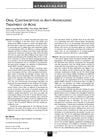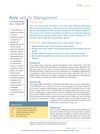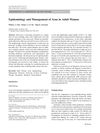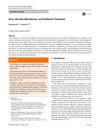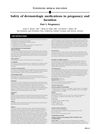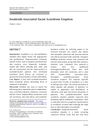Dermatologic Therapy: December 1986 to December 1987
July 1988
in “
Journal of The American Academy of Dermatology
”
isotretinoin clindamycin erythromycin benzoyl peroxide metronidazole astemizole dapsone ketoconazole cimetidine androgenic alopecia minoxidil male pattern baldness alopecia areata anthralin inosiplex PUVA etretinate cyclosporine cryotherapy interferon-a2b corticosteroid azathioprine Accutane Cleocin Benzac Metrogel Nizoral Tagamet Rogaine Psoralen and UVA Neoral liquid nitrogen interferon alpha-2b steroids
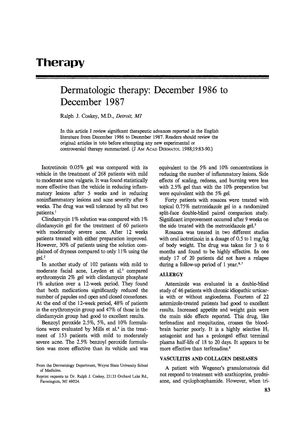
TLDR Various dermatologic treatments were effective for skin conditions like acne, rosacea, hair loss, and psoriasis from December 1986 to December 1987.
Between December 1986 and December 1987, numerous studies evaluated the effectiveness of dermatologic therapies for various skin conditions. Isotretinoin 0.05% gel was more effective than its vehicle for 268 patients with mild to moderate acne vulgaris. Clindamycin 1% solution and gel both reduced acne lesions in 60 patients, with the gel causing less dryness. Erythromycin 2% gel and clindamycin phosphate 1% solution significantly reduced acne in 102 patients, while benzoyl peroxide formulations effectively reduced inflammatory lesions in 153 patients, with the 2.5% concentration causing fewer side effects. Topical 0.75% metronidazole gel improved rosacea in 40 patients, and oral isotretinoin was highly effective in treating rosacea in two studies. Astemizole was beneficial for 46 patients with chronic idiopathic urticaria, and dapsone treated three patients with leukocytoclastic vasculitis. Ketoconazole was effective against seborrheic dermatitis, and cimetidine helped 7 out of 10 women with androgenic alopecia. Topical minoxidil showed positive results for male pattern baldness and alopecia areata, with varying degrees of hair regrowth. Other treatments included anthralin cream and inosiplex for alopecia areata, antifungal creams for fungal infections, and various treatments for psoriasis, including PUVA, etretinate, and hydrocolloid occlusive dressings. A combination of PUVA and etretinate was more effective for psoriasis than either alone, with 14 out of 18 patients clearing with the combination therapy. Oral cyclosporine improved severe plaque psoriasis in 17 out of 21 patients. Isotretinoin cleared pityriasis rubra pilaris in 4 out of 5 patients, and liquid nitrogen cryotherapy was effective for dermatofibromas. Treatments for mycosis fungoides included PUVA, electron beam therapy, chemotherapy, and recombinant interferon-a2b. A corticosteroid-azathioprine regimen was effective in treating generalized pemphigus, with 13 out of 29 patients free of disease for up to 132 months. The document also discussed the treatment of lice, herpes infections, warts, neurofibromas, and various other skin conditions.




